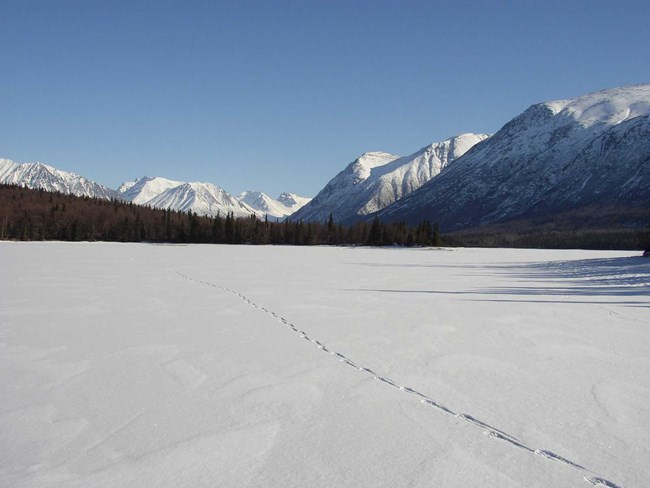
NPS/Dan Young
Processes such as snowpack accumulation and melt, lake ice formation and breakup, and vegetation growth and senescence are sensitive to climatic conditions and linked to many important ecological processes. For example, the timing of stream discharge is closely linked to snow-covered area of a catchment, snow depth, snow water equivalent, and snow season. Snowmelt dates also influence the timing of leaf-out, and both snowpack and green-up influence wildlife movement at the start of the growing season. Spatial variation in snow and growing season length is strongly influenced by gradients of latitude, elevation, and proximity to the ocean. Variation in lake ice affects lake temperatures and water levels, and largely controls human and wildlife travel routes over the course of the winter.
To measure seasonal processes across the landscape, we rely on remote sensing from satellites that measure the reflected light or energy emitted from the Earth’s surface to determine snow and ice properties or the amount of “greenness” being reflected from vegetation. These methods provide us a daily to monthly snapshot of what is occurring on the landscape. From these records, we can see the progressions of these processes and assess their timing over years to decades, a task that would be impossible to do with measurements on the ground. We monitor the patterns of freeze-up and break-up of lake ice of the major lakes in Southwest Alaska; 12 indicators of the progression of the snow season and its surface wetness; and the progression of the growing season spring green-up and fall senescence.
Contact: Michael Hannam
Learn more
Last updated: December 8, 2025
